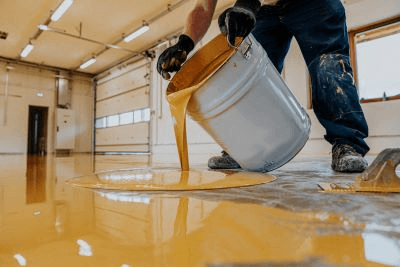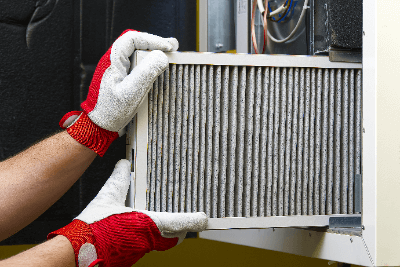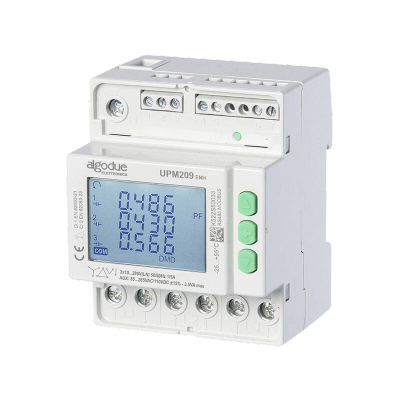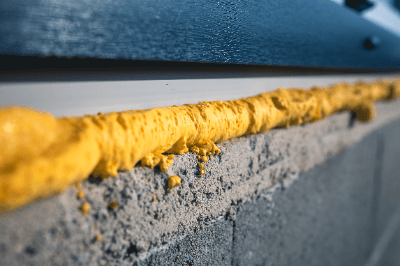What Is an Epoxy Resin Paint?
 An epoxy resin paint is a paint whose main ingredient is epoxy resin.
An epoxy resin paint is a paint whose main ingredient is epoxy resin.
It is characterized by the reticular cross-linking that occurs when the main ingredient, epoxy resin, reacts with a hardener. Epoxy resin coatings reflect the characteristics of epoxy resins and have excellent water and corrosion resistance.
Uses of Epoxy Resin Paints
Taking advantage of the characteristics of epoxy resin paints, which have high insulating properties and excellent chemical and water resistance, epoxy resin coatings are used as coatings for printed circuit boards, memories, CPUs, and other electronic components of many electronic devices and appliances, as well as for parts that do not conduct electricity.
In addition, its high corrosion resistance makes it suitable as a coating material for paints and can interior walls of automobiles and ships, and as an industrial adhesive. Recently, it is also used as a material for optical modeling, a type of 3D printer.
Principle of Epoxy Resin Paints
Epoxy resin, the main component of epoxy resin paints, is a generic term for compounds with reactive epoxy groups at their ends. Typical examples include bisphenol A and epoxy resins.
By adding a curing agent to this resin, a network of cross-links is formed and cured, resulting in a cured resin with a variety of properties. In general, the properties of epoxy resin paints can be adjusted by changing the type of curing agent, mixing ratio, and curing conditions.
Types of Epoxy Resin Paints
Epoxy resin coatings come in two types: two-component types, in which the base resin and hardener are mixed immediately before use, and one-component types, in which the base resin and hardener are pre-mixed and heated to harden.
1. Two-Component Epoxy Resin Paints
Two-component epoxy resin paints form a strong coating film when cured, and are characterized by their strong waterproofing and dustproofing properties. They also have excellent chemical resistance and abrasion resistance. Therefore, they are suitable for use under severe conditions.
Two-component epoxy resin paints have different applications depending on the type of hardener used in the mixture. The main types are polyamide amine effect type with water and alkali resistance, and modified polyamine type with water, alkali, acid, and solvent resistance.
Two-component modified epoxy resin primers and tar epoxy resin paints using modified epoxy resin are also suitable as rust inhibitors. To improve rust-preventive properties, a mixture of specially modified epoxy resin and aluminum phosphate pigment is also available, sold as an easy-to-handle spray.
2. One-Component Epoxy Resin Paints
One-component epoxy resin paints have excellent corrosion resistance and adhesion. One-component types are often used for repair spraying of wood, iron, steel, and other materials.
Other Information on Epoxy Resin Paints
1. Reaction of Epoxy Resin Paints (Epoxy Resins)
Epoxy resins contain functional groups called epoxy groups, and when mixed with a hardener, a ring-opening polymerization reaction of epoxy groups occurs, forming a three-dimensional cross-linked structure that cures. The high mechanical properties and chemical resistance of epoxy resins are the result of curing.
The curing reaction of epoxy resins and curing agents requires heat, but some resins and curing agents can cure at room temperature, depending on the combination of the resin and curing agent. The curing speed depends on temperature, with higher temperatures resulting in faster curing and lower temperatures resulting in slower curing.
Since the curing reaction is an exothermic reaction, the resin itself tends to become hot when the outside temperature is high, such as in summer, and may solidify in an instant, so care should be taken. Conversely, in winter, the curing reaction may stop at around 40F.
2. Cautions When Using Epoxy Resin Paints
Epoxy resin paints are expected to deteriorate at a rate of about 10㎛ per year outdoors, with the surface deteriorating and turning white due to ultraviolet rays. To ensure long-term performance, protection by coating with polyurethane or fluoro resin is necessary.


 Urethane insulation is a heat-insulating material made primarily of polyurethane resin.
Urethane insulation is a heat-insulating material made primarily of polyurethane resin.